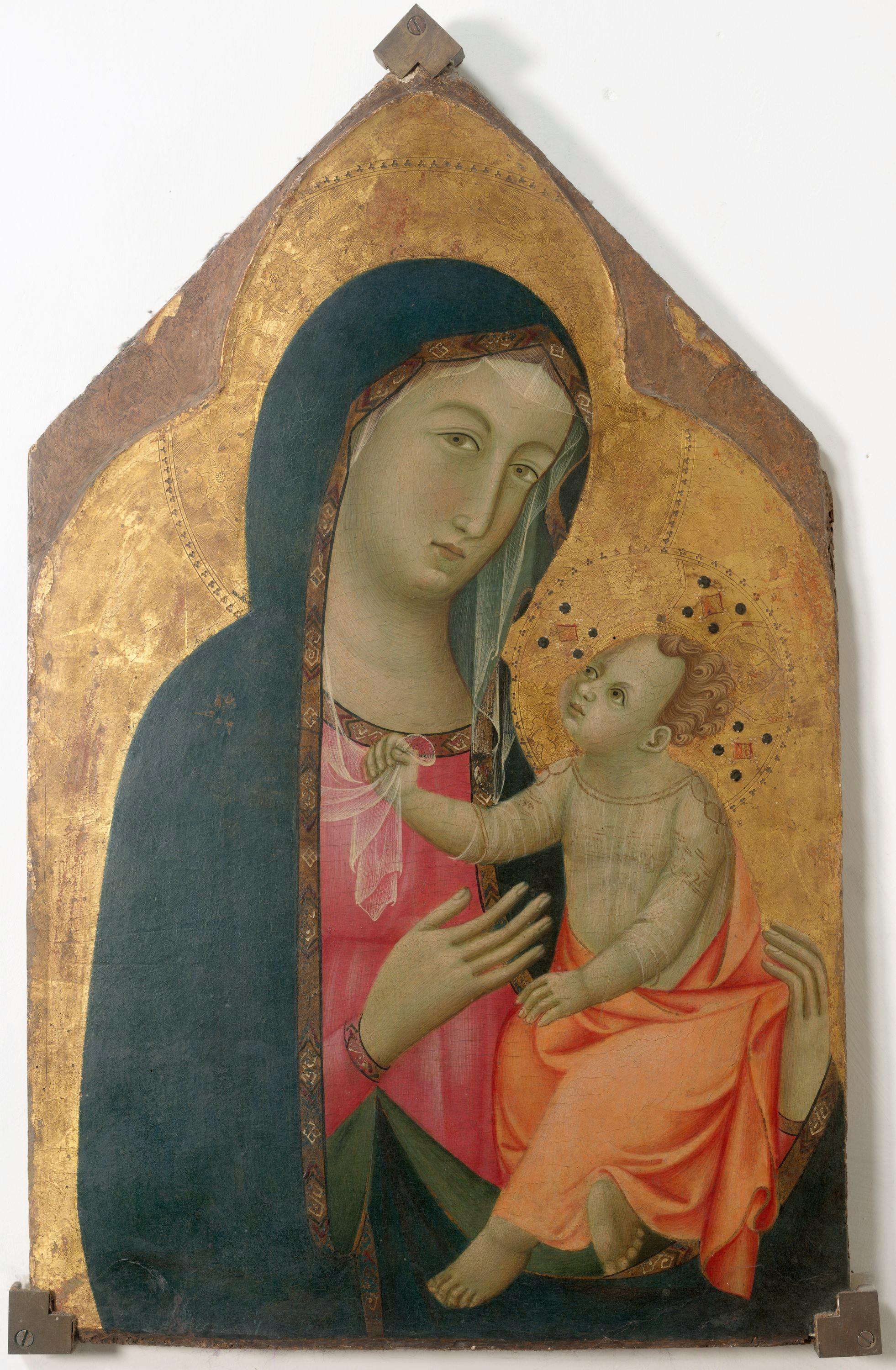Madonna and Child
Master of San Torpè (Vanni di Bindo? notes 1303-1318)
The central panel of a polyptych, this painting depicts the Virgin and the Baby Jesus according to the Odigitria Byzantine model, that is, she who shows the way to salvation. The Saviour grasps the veil covering his mother's head, foreshadowing the shroud he will later be wrapped in after his Crucifixion. His legs are crossed, an approach that connotes him as a judge, and he shows the heel of his bare foot, possibly alluding to the foot that will step on the devil (Genesis, 3:13-15).
This panel came to the Uffizi in 1989 with a group of works illegally exported from Italy and recovered after 1945 by Rodolfo Siviero. An inscription on the back states that on 26 May 1843, the sacred image was blessed by Giovanni Battista Bitossi, vicar general of the Diocese of Volterra, and that it was displayed in the chapel of Sant’Andrea at the Conservatorio di San Pietro in Volterra between the Feast of Ascension and the Feast of Pentecost, that is, from 25 May to 4 June 1843.
The origin of the work could, however, be different. The panel with the Madonna and Child may in fact have been the centrepiece of a polyptych alongside two panels featuring Saints Paul and John the Evangelist, preserved in the National Museum of San Matteo in Pisa (inv. nos. 1670 and 1672), which bear the Cinquini coat of arms, a family from Pisa. The polyptych may therefore have been executed for the chapel named after the Apostles, whose patronage the family had San Francesco church in Pisa.
The work is assumed to be by a master who was active in Pisa but of Sienese culture, trained under the influence of Duccio di Boninsegna. The formal name by which he is known, the Master of San Torpè, derives from the name of a church in Pisa where one of his paintings was kept. According to some scholars, this may actually be Vanni di Bindo, a Sienese master documented in Pisa in the first quarter of the 14th century.
